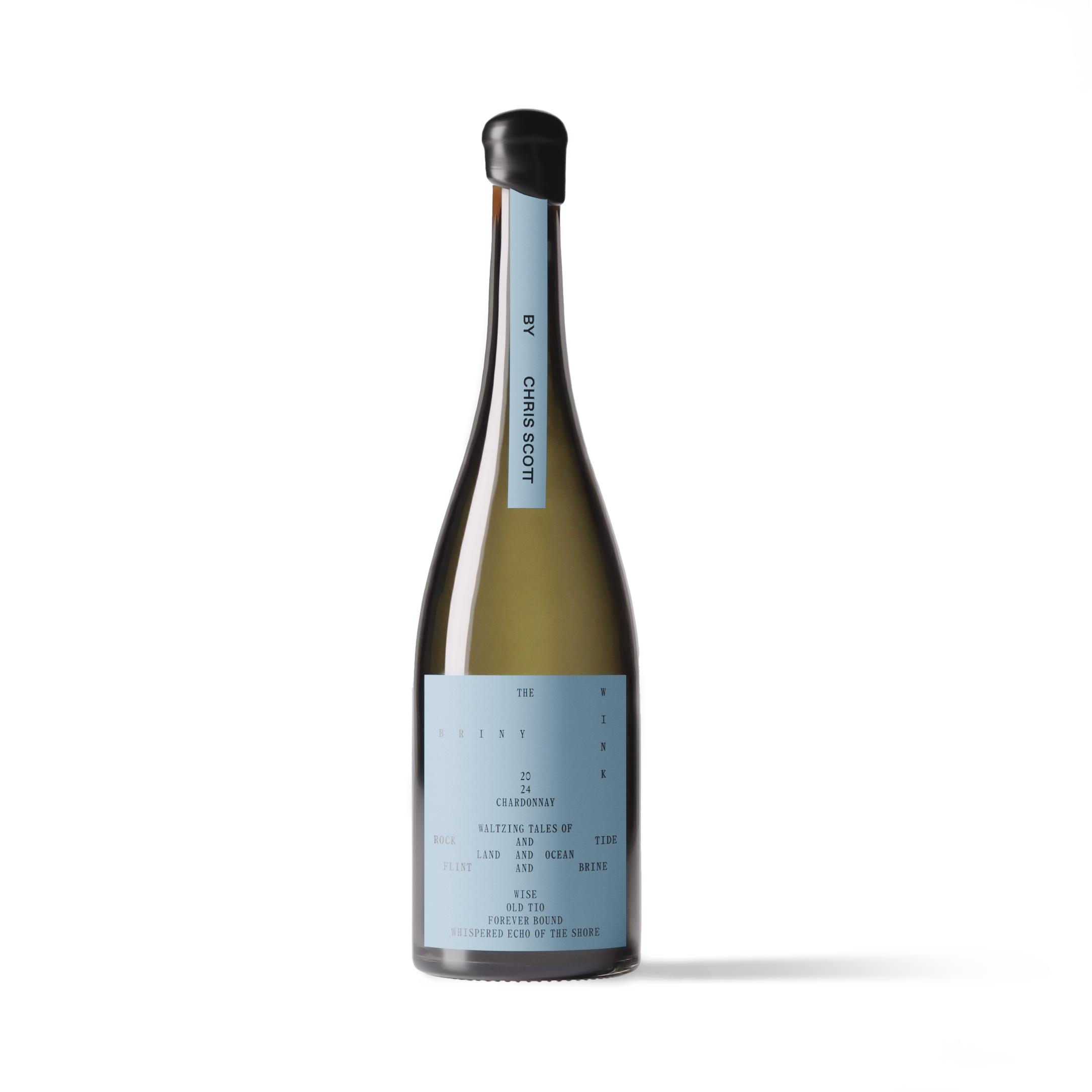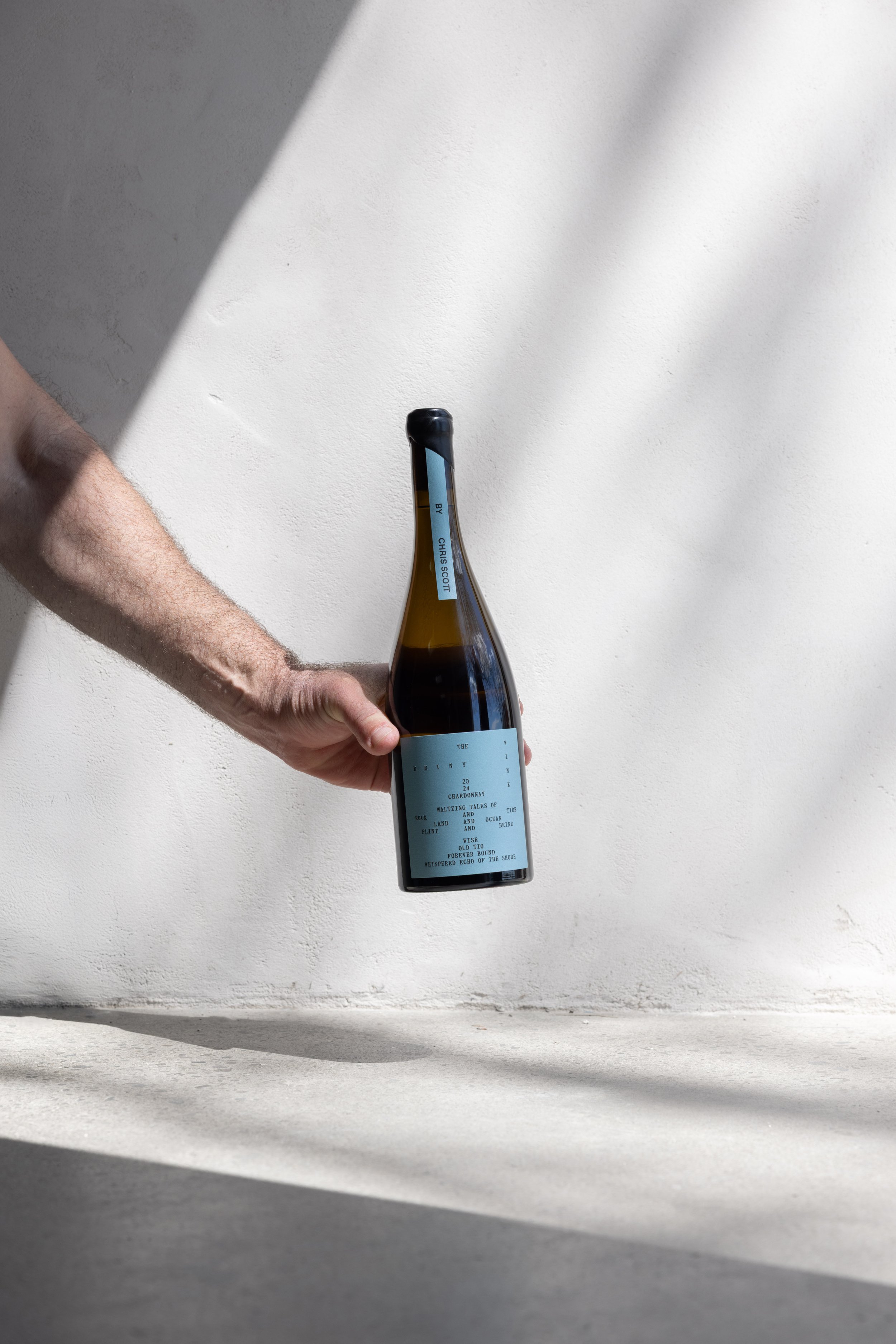NOTES FROM CHRIS
-
Grown on a gentle slope in the lower Tuki Tuki Valley, this area is close to the coast and relatively exposed to the cooling afternoon sea breeze making this the coolest and latest ripening of our three sub regions. Soils consist of a shallow clay loam over a hard calcified clay pan, resulting from limestone erosion. Whether it is this limestone influence, the cooling sea breeze or both, Chardonnay from this site is characterised by a wisp of flinty oystershell and a touch of savoury salinity that conjures up a sense of the sea.
This is a vineyard I have worked closely with for many years. It is without a doubt, one of the best Chardonnay vineyards in New Zealand and we were delighted to secure a small allocation of fruit for our own wines from the top end of the block, mid slope between river to the west and the crest of the hill to the east. Here, topsoil gets shallower and whiter in colour with more clay content. It is very low porosity and holds tightly to water through capillary action, making it less available to vine, while the clay pan restricts root volume and increases inter-vine competition making this a naturally devigorating soil.
-
2024 was an exceptional Chardonnay vintage in Hawke’s Bay, with warm sunny weather and regular summer rainfall events, the vines went into an extremely dry harvest season with healthy green canopies and good overall balance. Crops were naturally very low and this has translated to a natural underlying power in the wines. The warm growing season led to one of the earliest ever Chardonnay harvest in Hawke’s Bay and fruit was picked in pristine condition with vibrant flavours and fresh natural acidity.
-
Two parcels were hand harvested for this wine, on the 1st and 8th of March. The first pick at 20.3 brix, was the earlier ripening Dijon 95 clone which delivers a rounder, more gentle wine with subtle white peach, cashew nut and a very fine palate structure. This clone develops a ripe flavour spectrum and drops acidity ahead of accumulating sugar, and risks becoming overripe and flabby. However if picked on flavour and acid balance (rather than chasing sugar) it is capable of making beautifully elegant, subtle wines with underlying depth. The second parcel was the later ripening UCD clone 15. It is very susceptible to hen and chicken (poor fruit set that results in many small, seedless berries, or chickens) particularly on this cooler site. However, these little chickens pack a punch, ripening with more flavour intensity than the hens. It is something that is often referred to as a positive of the famous Mendoza clone, but is in many years just as much a strength for 15. It also holds its acidity well, and was hand picked one week later than the clone 95 at 22 brix.
With The Briny Wink we aim not to overwhelm the delicacy and beauty of the fruit and to let the wine be carried across the palate by the naturally fresh acidity, flinty minerality and savoury salinity, rather than by lashing of structure and sweetness from heavy use of new oak. Whole bunch pressing at low pressure helps preserve the delicacy of the fruit. The juice is settled overnight to leave behind only the heaviest of the solids. There is no other clarification treatment or additions to the juice. The racked juice is simply filled to predominantly older French barrels for wild fermentation. Lees stirring is kept to a minimum, employed only to help the primary and malolactic fermentation to finish fully, after which time the barrels are fully sealed with a small sulphite addition and allowed to mature for a total of 11 months. Again this helps to preserve fruit freshness and sense of minerality, without any excessive heavy lees character.
After each individual barrel was evaluated for quality the wine was racked to a blend in January 2025 and was allowed to mature further on light yeast lees in tank for 7 months. This was long enough to achieve natural clarity through settling only, and wine was bottled without any fining, stabilisation or filtration
-
Vine age 13 years
Vine spacing 1.5m
Row spacing 2.7m
Pruning two cane VSP
Av yield 5.5 t/ha or 2 kg/vine
Clonal selection 54% UCD15, 46% Dijon 95
Oak: 228 L Burgundy barrels. 13.5% new, 20.5% 1st fill, 35% 2nd fill, 31% 4th fill
Yeast: Wild
MLF Bacteria: Wild
Fining, stabilisation and filtration: None
Alc 13.24%, TA 7.1 g/L, pH 3.2, RS 2.7g/L
Closure: Diam Origine 30 49mm (wax sealed for reduced oxygen ingress). A technical cork made from cork particles that have been purged of impurities and bound with natural plant polymers and bees wax. TCA free and will perform consistently in every bottle for at least 30 years. In our trials to date they have out performed both natural cork and screw cap.





